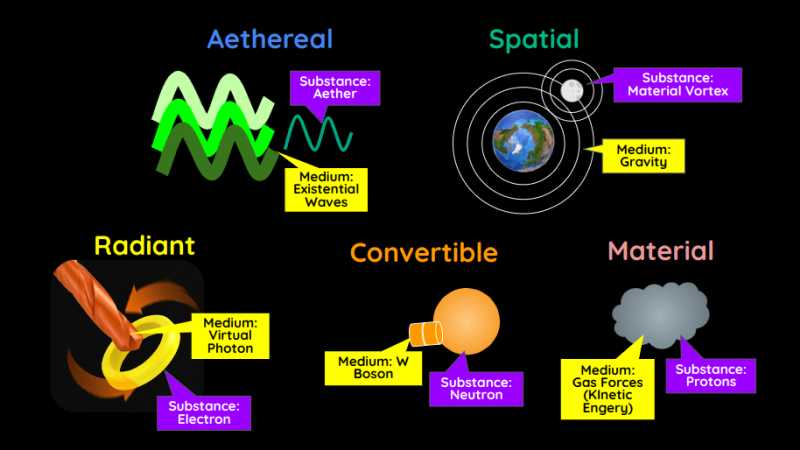The 4 Rules of Motion
Table of Contents
Ww use 4 Rules of Motion from the 4 Properties of Waves.
- No Void (Commonality)
- Straight or Circle (Density)
- Collisions (Balance)
- State-Change (Spread)
Motion Versus Movement
“Motion” comes from the Latin noun motionem which means “a moving”.
“Movement” comes from Latin verb movere, meaning “to move” as pushing away.
We can say that motion is the more formal usage, while movement is the more casual one.
- This is similar to ’emotion’ being more formal than ‘feeling’ despite meaning the same thing.
We define motion or movement as a change in an identity’s spatial properties. This includes shape, size, location.
This is different from layman’s movement which is a change in location.
We define:
- change as the perception of differences of or within an identity
- time as the cognitive gap between perceptions of identities in general

This gives us an ‘ontological’ hierarchy:
- Change
- Time
- Motion
Change is rooted in the aethereal layer, while time and motion are rooted in the spatial layer.
Motion is a change in an identity’s spatial properties
All phenomena are observed by the mind through the intervention of media.
- Space (sos3 and mos3 in Material Superphysics) is the most prevalent medium for physical phenomena
- Time (sos1 and mos1) is the most prevalent medium for metaphysical phenomena
We see a ball because the information given by the ball is transported by:
-
the medium of light in the medium of time
-
the medium of our fluids into the medium of our nerves into the medium of our soul
Chapter 3 explained that force particles are spinning bolts.
It follows that non force particles are called media and all non-forces are called substances.
The media represent the different forms of the perpetually dynamic Positive and Negative Forces where they originate from.
These insert themselves into the substances that they are assigned to in order to create movement and change in physical reality.
| Example Medium or Force | Example Substance or Quantum |
|---|---|
| Existential desire | Aether or Ideas |
| Gravity | Material vortices |
| Virtual Photons | Electrons |
| W Boson | Neutron |
| Gas Contact Forces | Protons |

This means that all movement comes externally but are ultimately based on the internal aethereal configuration of the substances that exist.
Examples are gravity, magnetism, and contact forces:
- Gravity caused by
mosts(gravitons to Physics) going through and affecting matter and light - Magnetism is caused by
mors(virtual photons to Physics) going through electrons and other particles - Tactile movement is caused by
moms(contact forces to Physics) pushing or pulling matter.
Two Kinds of Movement
The energy transfer between media and substances then leads to 2 kinds of movement:
- Sequential or Relative Movement
This is relativistic motion that matches the principles of Newton and Einstein.
- Non-Sequential Movement
This is true motion or aether-based motion that allows jumping between spacetime. An example is your movement in your dreams where you can jump from one scene into another non-sequentially.
This is the foundation of teleportation and levitation.
In Cartesian Physics, all forces come from spinning virtual particles that pervade existence. These then go into receiver particles that get their motion in order to spin themselves.
The spin of these non force particles creates phenomena that we can sense.
For example, magnetism is caused by spinning virtual photons that go into channels in metals.
This creates a magentic flux, which we call a virtual photon vortex, at the entrance and exit of the channels.
This concentrates the virtual photons, allowing them to grab virtual space particles in order to exert an attractive or repulsive force in the direction of their travel.
This is because all forces, whether gravity, magnetism, or contact forces, are caused by space particles.
An easy way to understand this is to imagine the force particles as bolts that corkscrew into non force particles.
- Radiant force particles (photons, virtual photons) have an anticlockwise spin
- Convertible (weak) force particles (W Z bosons) have a clockwise spin
This is why the weak force interacts only with left handed particles.